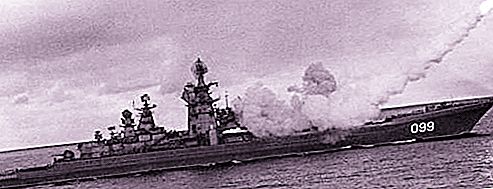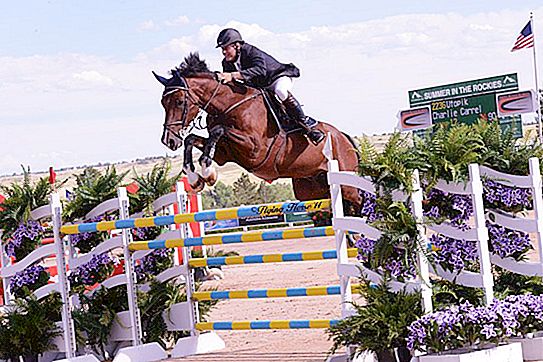During the Cold War, the designers of the USSR and the USA laid the foundation for carrying out work on the creation of submarines containing ultra-high-speed missile torpedoes and cruise missiles. The aggravated relations between the USSR and the USA caused the appearance of missile cruisers in the Soviet armed forces equipped with anti-ship missiles and supersonic bombers. In 1983, the armament of the USSR Navy adopted the supersonic cruise missile P-700 of the Granit complex. Since 1969, the beginning of its creation, and to this day the complex has improved and passed more than one state test.
How was the weapon made?
The P-700 Granite rocket was developed at the NPO Mashinostroeniya under the leadership of chief designer V. N. Chelomey. In 1984, he was replaced by Herbert Efremov. For the first time on a state test the cruise missile P-700 of the Granit complex was presented in 1979.
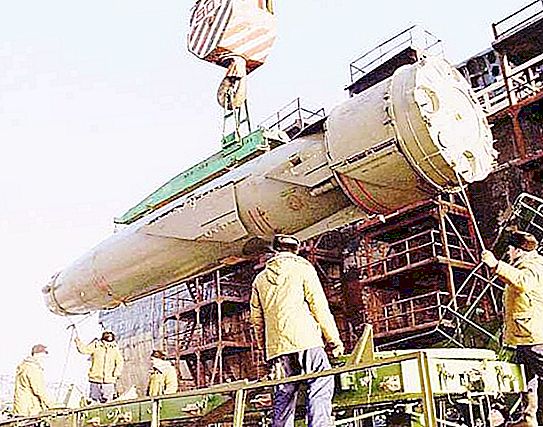
The onboard autonomous selective system for controlling a cruise supersonic missile was assembled by scientists and designers of the Central Research Institute "Granit". Director General V.V. Pavlov was appointed responsible for the operation of this site.
Testing was carried out with the help of shore stands, a submarine and the cruiser “Kirov”. Since 1983, all design work was completed, and the Navy of the USSR received at its disposal the P-700 Granit complex. The photo below presents the design features of the anti-ship missile.

What did the Soviet designers manage to achieve?
While working on the creation of the P-700 supersonic cruise missile, the principle of mutual coordination of three elements was used:
- Means implementing an indication of purpose.
- The medium on which the installation of missiles.
- RCC.
As a result, the creation of a single complex from these elements made it possible for the Navy of the Soviet Union to cope with the most difficult tasks of naval battles: to destroy powerful ship and aircraft carrier groups.
Which ships were armed with the new complex?
According to the decision of the CPSU Central Committee, after a successful flight design test in November 1975, the Granit complex was armed with:
- “Antei” is a nuclear submarine.
- The Orlan is a heavy nuclear missile cruiser.
- The Gyrfalcon is a heavy aircraft-carrying cruiser.
- “Admiral of the Fleet of the Soviet Union Kuznetsov.”
- Heavy aircraft cruiser.
- “Peter the Great” - a heavy cruiser.
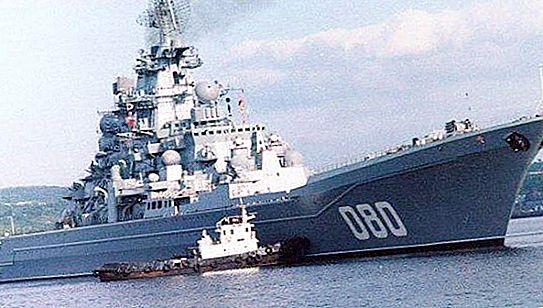
The type of carrier is affected by the dimensions of the rocket. Over time, the P-700 missiles need to be replaced with more versatile and compact anti-ship missiles with a shorter range. The need for replacement is also due to their technical obsolescence.
Installation efficiency
To counter the real aircraft carrier threat from the US Air Force by Russian designers, an asymmetric and economical solution was found. The calculations showed that the equipment of each Russian submarine cruiser complex "Granite" the country is much cheaper than the United States and their aircraft carriers. After the work carried out on the modernization of missile systems and their carriers, the Granit anti-ship missile, provided they are improved and maintained in combat readiness, can give high rates until 2020.
What is a gun?
The P-700 missile of the Granite complex is a cigar-shaped product, the front of which contains an annular air intake and a folding cross tail. The central part of the fuselage is equipped with a short wing having a high sweep. After launching the rocket, the wing unfolds. The missile is adapted for sea and air space. Depending on the operational and tactical situation, the RCC can use various flight paths. Complex "Granite" can carry out a volley from the existing ammunition, as well as use anti-ship missiles individually. In such cases, the principle applies: one released P-700 - one enemy ship hit.
What is the purpose of supersonic cruise missiles?
The typical task of the Granite complex is the destruction of naval targets. According to military experts, shooting at coastal targets is problematic. This is explained by the fact that when pointing to earthly targets GOS (homing heads) RCCs do not function. In such cases, an autonomous mode is intended for missiles, in which the homing heads are disabled. Instead, the RCC induction function is performed by the inertial system. Winged P-700s have a very high range of fire at ground and coastal targets (higher than at sea). To destroy objects on land for PRK does not require a decrease in low altitudes. Despite this, such use of cruise missiles without an activated GOS is an expensive undertaking: the ammunition of the Granit complex is vulnerable to enemy air defense.
How is the start?
The P-700 Granite cruise missile comes into motion using the KR-21-300 turbojet engine located on the central axis. At the rear of the rocket is a block that contains four solid fuel accelerators. For storage of the rocket, a special sealed transport and launch container is provided. Prior to the launch of RCC “Granite” P-700, the wings and plumage are in the folded position. With the help of a domed fairing, the air intake is covered. In order for the P-700 Granite installation to not be damaged by exhaust during the launch, it is filled with water taken overboard before launch. This procedure is necessary in order to turn on the accelerator, which pushes a rocket out of the mine. The domed cowl leans back in the air. In this case, the wings and plumage, which before the start were in a folded state, open. After combustion, the accelerator leans back, and the rocket uses a marching engine for its flight.
What is the gun equipped with?
The Granite P-700 missiles contain:
High-explosive penetrating warhead. It weighs from 585 to 750 kg.
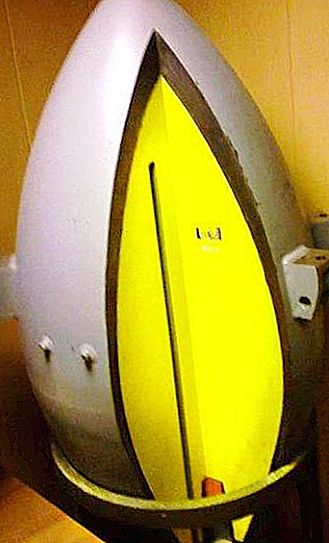
- Tactical Nuclear.
- TNT equivalent, whose weight is 500 kilotons.
Today, according to the adopted international agreement, the Granite P-700 cruise missiles are prohibited. For their equipment, only conventional warheads are provided.
The performance characteristics
- The size of the missile complex "Granite" P-700 is ten meters.
- Diameter - 85 cm.
- Wingspan - 260 cm.
- Before launch, the weight of the gun is 7 tons.
- The product is able to achieve a minimum flight altitude in the attack area of 25 meters.
- The combined flight path allows the missile to reach a range of up to 625 km.
- Low altitude trajectory allows you to fly to a distance not exceeding 200 km.
- Using the control system of ANN, ARLGSN.
- The gun is equipped with a penetrating warhead, the weight of which is 750 kg.
Due to the large mass and high speed of the P-700, it is difficult to hit enemy anti-aircraft missiles in them. According to some military experts, the P-700 warhead, which weighs 750 kg, is effective only for hitting an area target. This is due to the fact that cruise missiles are characterized by deviations to a range of up to 200 meters, which makes it difficult to pinpoint a single target.
What is a digital computer?
An active radar head is used to direct the missile at the target. Information channels that are used by a three-processor on-board computer (BCM) make it possible to distinguish a real target from a large number of interference. During a group launch of missiles (volley), enemy detection becomes possible by exchanging information, identifying and distributing the target according to various parameters between the homing missile heads.
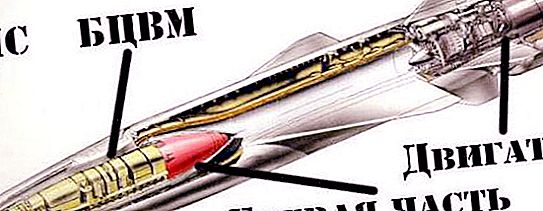
The ability of missiles from a number of escort, aircraft-carrying or landing ships to identify the desired target and strike at it is possible due to the necessary data stored in the on-board computer on all classes of modern ships. The operation of the BCMC is aimed at the enemy’s electronic equipment, which, by creating interference and other anti-air tactics, can lead fired cruise missiles away from the target. In modern P-700 there is a station 3B47 “Quartz”, which with the help of special devices discards additional reflectors and false targets provided by the enemy. The presence of a BTsVM makes the P-700 highly intelligent: the anti-ship missiles are protected from enemy radar interference, set their own targets and create false targets for the attacked air defense. With a group start, an exchange of information is possible due to the digital computer.
How is the attack carried out?
For firing at targets, the distance to which exceeds 120 km, the P-700 rises to a height of 17 km. Most of the flight takes place at this level. At this altitude, the effect of air resistance on the rocket is reduced, which makes it possible to save fuel. At the level of 17 km, the target detection radius improves. After the target is found, its identification is performed. Then fired rockets are reduced to 25 meters. GOS turns off. This makes the RCC invisible to enemy radars. The GOS turns on right before the attack itself, when it is necessary to carry out accurate aiming. A missile attack is organized in such a way that first targets are destroyed, and then secondary ones. Information is distributed between the missile heads before the attack itself. Due to this, a certain number of missiles is designed to hit each target. The presence of tactical techniques programmed in each cruise missile gives them the opportunity to defend themselves against enemy defense air defense systems.
How do RCCs work?
An attack from a single cruise missile can be aimed at a separate ship. If a group start is carried out, anti-ship missiles hit a whole complex of ships. The experience of the P-700 with the airborne forces showed the high efficiency of missiles at the coastal targets of the enemy if they operate in a group. In this case, the first missiles containing a special charge disable all the enemy air defense systems. The carrier group that the attacked city or port has is no longer able to resist. The next stage of the attack is carried out by other missiles that do not have special charges to blind the enemy. In the complex of fired missiles, one of them can serve as a gunner. Mostly such anti-ship missiles are used for firing fire. For her, the use of considerable height is provided. When intercepted by enemy radars or its destruction, another ultrasonic cruise missile automatically assumes the aiming function.

